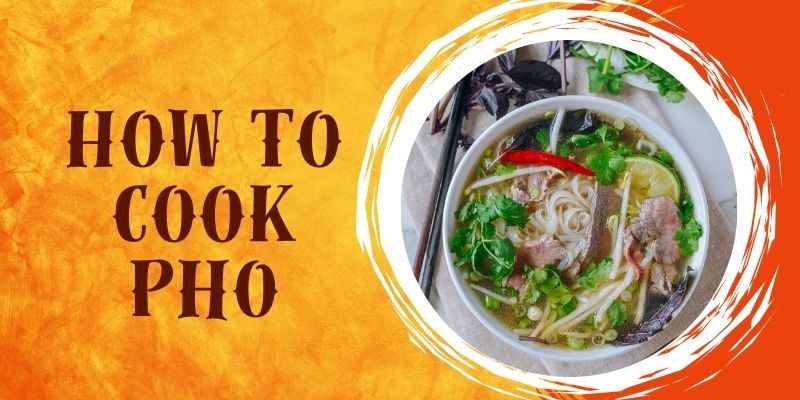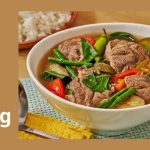Pho, the quintessential Vietnamese noodle soup, is a beloved dish known for its fragrant broth, tender meat, and delicate rice noodles. Originating from northern Vietnam in the early 20th century, pho has gained immense popularity worldwide, thanks to its rich flavors and heartwarming essence. This guide will walk you through the process of preparing an authentic bowl of pho from scratch, including essential ingredients, step-by-step instructions, and serving suggestions.
Essential Ingredients
To create a delectable bowl of pho, you’ll need the following key ingredients:
-
Broth Base:
- Beef bones (preferably marrow and knuckle bones) or chicken bones
- Water
- Onion (halved)
- Ginger (sliced)
- Star anise
- Cinnamon sticks
- Cloves
- Coriander seeds
- Rock sugar
- Fish sauce
-
Noodles and Meat:
- Rice noodles (banh pho)
- Thinly sliced beef (such as sirloin, brisket, or eye of round) or chicken breast
-
Garnishes and Accompaniments:
- Aromatic herbs: Thai basil, cilantro, and mint
- Bean sprouts
- Lime wedges
- Thinly sliced onions
- Sliced chili peppers
- Hoisin sauce
- Sriracha sauce
Step-by-Step Instructions
Step 1: Prepare the Broth
- Roast the Bones: Preheat your oven to 450°F (230°C). Place beef or chicken bones on a baking sheet and roast for about 30 minutes until browned. This step enhances the broth’s flavor.
- Char the Onion and Ginger: While the bones are roasting, char the halved onion and sliced ginger on a grill or in a dry skillet until they develop a slight char, this adds a smoky depth to the broth.
- Simmer the Broth: In a large pot, add the roasted bones, charred onion, ginger, and water (enough to cover the bones). Bring to a boil, then reduce the heat to a gentle simmer and skim off any impurities that rise to the surface.
- Add Aromatics: Toast the star anise, cinnamon sticks, cloves, and coriander seeds in a dry skillet until fragrant. Add these spices, along with rock sugar and fish sauce, to the simmering broth.
- Simmer for Hours: Let the broth simmer for at least 4-6 hours (preferably longer) to extract all the flavors from the bones and spices, the longer the summer, the richer the broth.
- Strain the Broth: Once the broth is ready, strain it through a fine-mesh sieve to remove the solids. You should be left with a clear, flavorful broth, adjust seasoning with fish sauce or salt if needed.
Step 2: Prepare the Noodles and Meat
- Prepare the Rice Noodles: Follow the package instructions to cook the rice noodles. Typically, they need to be soaked in warm water until softened, then briefly boiled, rinse under cold water to prevent sticking.
- Prepare the Meat: If using raw beef or chicken, slice the meat thinly against the grain. For chicken, poach the breast in the simmering broth until fully cooked, then slice.
Step 3: Assemble the Pho
- Arrange the Noodles: Place a generous amount of cooked rice noodles into each serving bowl.
- Add the Meat: Arrange the thinly sliced raw beef or cooked chicken on top of the noodles.
- Ladle the Broth: Pour the hot broth over the noodles and meat. The heat from the broth will cook the thinly sliced beef instantly.
Step 4: Garnish and Serve
- Add Fresh Herbs: Top your pho with fresh Thai basil, cilantro, and mint.
- Include Accompaniments: Add bean sprouts, lime wedges, thinly sliced onions, and sliced chili peppers to each bowl.
- Customize with Sauces: Serve hoisin sauce and Sriracha sauce on the side, allowing each diner to customize their bowl to taste.
Serving Suggestions
Pho is best enjoyed fresh and hot, with a variety of garnishes and accompaniments. Here are some serving suggestions to enhance your pho experience:
- Traditional Pho: Serve the pho as described above, allowing each person to customize their bowl with fresh herbs, bean sprouts, lime, and sauces.
- Pho Variations: Experiment with different proteins such as shrimp, tofu, or meatballs. You can also create a vegetarian version using vegetable broth and a mix of mushrooms and tofu.
- Side Dishes: Accompany your pho with traditional Vietnamese side dishes like fresh spring rolls (goi cuon) or fried spring rolls (cha gio).
- Beverages: Pair your pho with a refreshing Vietnamese iced coffee (ca phe sua da) or a light herbal tea.
Conclusion
Cooking pho at home is a rewarding experience that allows you to savor the rich, aromatic flavors of this iconic Vietnamese dish. By following these step-by-step instructions and incorporating essential ingredients, you can create an authentic bowl of pho that rivals any restaurant offering. Whether you’re a pho enthusiast or new to Vietnamese cuisine, this guide provides everything you need to master the art of cooking pho. Enjoy the process, experiment with flavors, and most importantly, share this delightful dish with loved ones.



